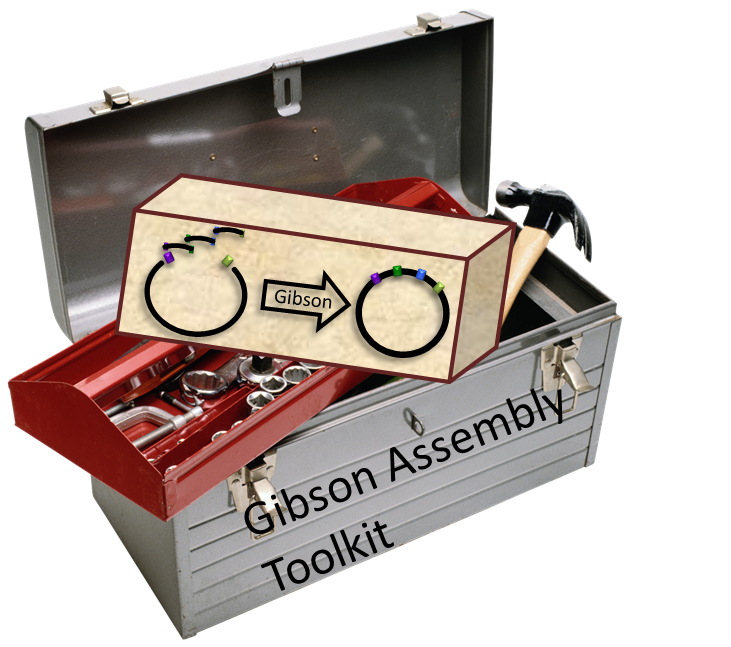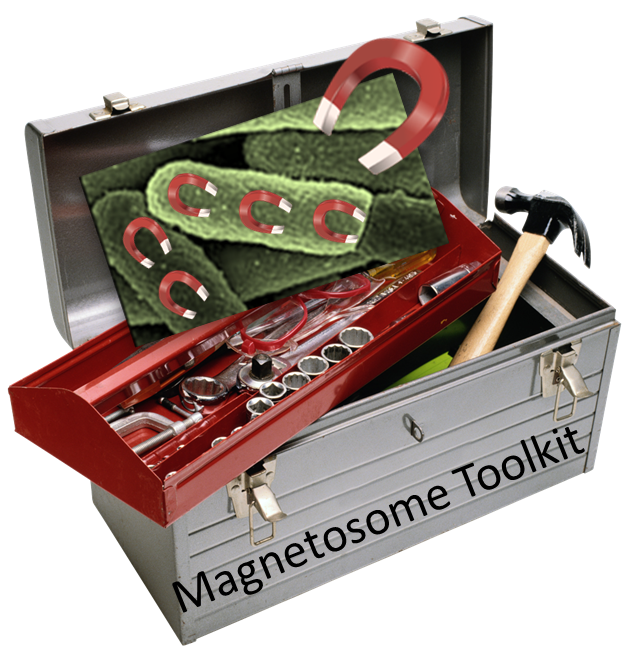Team:Washington/Magnetosomes/Background
From 2011.igem.org
As the iGEM competition grows, iGEM teams are looking to build increasingly complex systems with many gene inserts. In some cases, we want to transfer whole organelle-level systems from host organisms that may be difficult to culture or have other undesirable traits to model organisms that are easy to manipulate. This type of large-scale gene manipulation has been accelerated by new DNA assembly techniques, perhaps most notably the Gibson Assembly method. These new tools allow for multiple inserts and allow precise design down to the nucleotide level without ligation scars which can degrade the performance of gene circuits. Since 2010 the UW iGEM team has been researching methods to improve cloning efficiency for Gibson Assembly and have submitted to the Parts Registry two "toolkits"': the Gibson Assembly Toolkit and the Magnetosome Toolkit.
Gibson Assembly Toolkit
To expand on work started by the 2010 UW IGEM team, this year we developed and submitted a set of plasmid backbones for BioBricks that are optimized for Gibson assembly. Based on the BglBrick standard RFC 21, these pGA (plasmids for Gibson Assembly) vectors comprise the Gibson Assembly Toolkit. These vectors have much higher cloning efficiencies than the equivalent pSB vector and are fully compliant with BioBrick RFC 57 developed by the 2010 Cambridge iGEM team.
- What's in the Gibson Assembly Toolkit?
Five plasmid backbones for high-efficiency, multiple-fragment assemblies.
- 2 high copy vectors for gene extraction and cloning: pGA1A3, pGA1C3
- 1 medium copy expression vector: pGA3K3
- 2 low copy expression vectors: pGA4A5, pGA4C5
Magnetosome Toolkit
One amazing thing some bacteria do is to fabricate nano-scale magnets from soluble iron. They can use these magnetic particles, aligned in chains, to sense and navigate along the earth's magnetic field. In order to bring these fabrication and sensing capabilities to future iGEM teams, we created the Magnetosome Toolkit: a set of 18 genes from the essential mamAB operon of Magnetospirillum magneticum strain AMB-1. We extracted these genes from AMB-1, and used our pGA vectors to efficiently BioBrick and sequence verify constructs of all 18 genes. We have also begun to characterize these genes, with some exciting results. The ultimate goal of this toolkit is to enable future iGEM teams to generate magnetoColi: E. coli with magnetic properties.
What’s in the Magnetosome Toolkit?
- A set of gene clusters from the essential mamAB operon from strain AMB-1
- Our favorite genes as translational fusions with superfolder gfp in pGA vectors
- A table compiling individual gene functions from our literature search
 "
"




